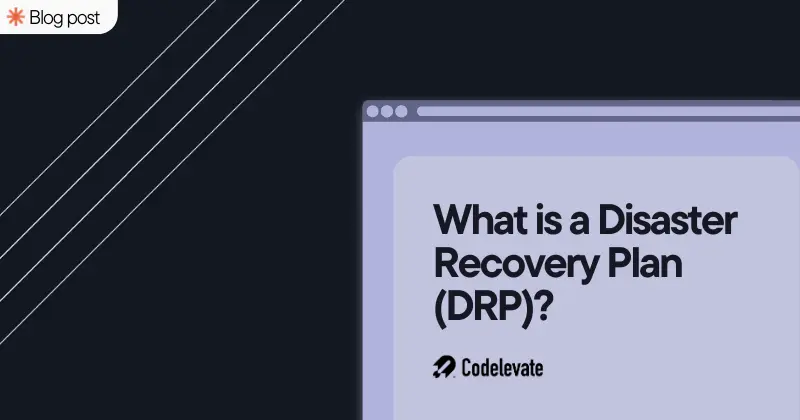10 lessons for building a successful marketplace
Creating a successful marketplace is a complex yet rewarding journey that requires a blend of strategic planning, market understanding, and user engagement. We at Codelevate have helped numerous founders navigate the challenges of building platforms that grow fast. In this article, we’ll share essential lessons to guide you on your marketplace journey, with practical insights that you can apply to your own project.
Talk to Both Sides First
Understand the Problem from Both Perspectives
Before you start building, it’s crucial to talk to potential paying customers on both sides of your marketplace. It’s tempting to dive into development, confident in your solution, but without direct feedback, you risk missing the mark. Asking your future users, "How are you currently solving this problem?" can provide invaluable insights into their needs, frustrations, and expectations.
This dialogue helps you tailor your marketplace to solve real problems effectively, rather than making assumptions that could lead to costly misalignments later on. Involving both sides early on not only informs better design decisions but also builds early relationships that can be crucial once you launch.
Avoid Operating Blind
Skipping this step often leads to developing features or services that don’t align with user needs. By engaging with your market from the outset, you can ensure that your marketplace is built with a deep understanding of the problems it aims to solve, making it more likely to succeed.
Prepare for the Long Term
Financial Preparation is Key
Building a two-sided marketplace is not a quick endeavor. It often takes one to two years to gain significant traction, so having a financial plan is essential. Whether it’s through savings, other income sources, or external funding, ensure you can sustain yourself and your business during the initial phase.
At Codelevate, we advise our clients to prepare for the long haul. Success in the marketplace world requires patience, and without a solid financial cushion, even the most promising projects can falter before they have the chance to grow.
Patience Pays Off
The time it takes to build a thriving marketplace can be daunting, but rushing the process can lead to burnout or premature abandonment of the project. Steady, patient growth, supported by sound financial planning, is key to long-term success.
Leverage Existing Audiences
Utilize Your Current Network
One of the smartest ways to jumpstart your marketplace is by leveraging existing audiences. Whether it’s your own network or an audience built through another platform, tapping into an established user base can give you the initial traction you need.
For example, we’ve seen platforms like Remoteok thrive by leveraging the audience of NomadList, and RailsDevs grew by tapping into the founder’s Ruby on Rails Twitter following. Using an existing audience that already trusts and values your offerings can significantly reduce the time and effort needed to gain momentum.
Build from a Solid Foundation
Starting with an audience that already knows and trusts you provides a solid foundation for your marketplace. It allows you to focus on refining your platform and service offerings rather than spending excessive time and resources on attracting your first users.

Pre-Launch and Promote Early
Don’t Wait for Perfection
It’s easy to get caught up in perfecting every detail before launching your marketplace, but promoting early has significant benefits. Use tools like Google Forms or simple landing pages to start gathering interest and feedback even before your platform is fully ready.
This strategy is particularly effective for generating pre-launch interest in the side of your marketplace that provides the "inventory" for incoming visitors. Early promotion helps you gauge interest, collect valuable feedback, and make necessary adjustments before your official launch.
Early Engagement Equals Early Success
Promoting early not only builds anticipation but also provides insights that can refine your product. Engaging with your market before launch increases the likelihood of a successful debut and sets the stage for sustainable growth.
Find Your Customers First
Know Where Your Customers Are
Understanding where your customers spend their time is critical to your marketplace’s success. Are they on social platforms like Facebook, Reddit, LinkedIn, or Quora? Are they more active offline? Identifying the right channels helps you target your marketing efforts effectively.
Calculate and Manage Customer Acquisition Costs
Once you know where your customers are, it’s essential to consider how you’ll reach them. Can you afford to advertise on these platforms? What’s your customer acquisition cost, and how does it impact your pricing model? Balancing these factors is key to creating a sustainable marketing strategy.
Explore Free and Low-Cost Channels
If advertising costs are prohibitive, consider using directories, podcasts, and other free channels to reach potential customers. These alternatives can provide valuable exposure without the high costs associated with paid advertising.
Evaluate Competitors
Study How Others Are Solving the Problem
Before launching your marketplace, it’s important to understand how competitors are addressing the problem you aim to solve. Evaluating competitors gives you insights into what works, what doesn’t, and where there might be opportunities for differentiation.
Differentiate Your Offering
Competitor analysis isn’t just about imitation; it’s about finding ways to stand out. Use what you learn to differentiate your marketplace by offering unique features or services that address unmet needs in the market.
Keep MVP Costs Low
Rethink Your MVP
A Minimum Viable Product (MVP) doesn’t need to be a fully developed platform. In fact, starting small can be a strategic advantage. For example, RailsDevs began as a simple spreadsheet cataloging developers. This approach allowed the founder to validate the concept with minimal investment.
At Codelevate, we often recommend focusing on core features that address the most pressing needs first. This allows you to test your ideas without overcommitting resources, ensuring that your initial investment is both strategic and manageable.
Solve Problems with Minimal Investment
Your MVP should solve the core problem efficiently, without unnecessary bells and whistles. Once you’ve validated your concept and gathered user feedback, you can gradually expand and refine your platform.
Use Off-the-Shelf Solutions
Prioritize Marketing
Launching a marketplace isn’t just about the development; it’s largely about marketing. To get your platform to market quickly, consider using off-the-shelf software or pre-made solutions that you can customize. This approach frees up time and resources to focus on the critical task of attracting users.
By minimizing development time and costs, you can invest more in customer acquisition, which is crucial for marketplace success. Once your marketplace gains traction, you can then justify the investment in custom features and enhancements.
Invest Wisely in Development
As your marketplace grows, transitioning from an off-the-shelf solution to a custom-built platform can provide more control and scalability. For example, when we worked with Parentally.nl, they have used simple Wordpress solution template. As the platform grew, we developed a custom solution that allowed them to scale effectively, adding new features that catered to their growing user base.
Pre-Seed Your Marketplace
Populate Your Platform Before Launch
A new marketplace with little to no content can appear barren and uninviting. To avoid this, consider pre-seeding your platform with public or simulated data. For instance, job boards might pull in job listings to populate their platform before launch, while stock photo sites might use freely available images.
Pre-seeding your marketplace makes it look active and engaging, which is crucial for attracting those first users. It’s much easier to convince someone to join a platform that appears dynamic and well-populated.
Create an Engaging User Experience
Once your marketplace is live, focus on maintaining an engaging experience. Whether through user-generated content, automated tools, or strategic partnerships, keep your platform lively and attractive to new users.
Help Users Onboard
Provide Exceptional Onboarding Support
The onboarding process can make or break a user’s experience with your marketplace. Providing exceptional support during this phase can significantly improve user retention. At Codelevate, we emphasize the importance of guiding users through their first interactions with your platform, ensuring they feel confident and supported.
Build Loyalty Through Support
Offering personalized onboarding assistance not only helps users get started but also builds long-term loyalty. When users feel supported, they’re more likely to stick with your platform and become advocates for your marketplace.
Conclusion
Building a successful marketplace requires strategic planning, understanding your market, and staying patient as you grow. By following these lessons—engaging with both sides of your market, preparing for the long term, leveraging existing audiences, and more—you can create a marketplace that not only survives but thrives.
At Codelevate, we specialize in helping marketplace founders build platforms that keep users engaged and happy. From initial concept to scalable, custom solutions, we’ve guided numerous marketplaces to success. If you’re ready to take your marketplace to the next level, reach out to us and let’s build something great together.


.webp)


.svg)




